Public Opinion Polling Basics
A short course explaining how public opinion polling works

Polling course overview
Welcome! I’m Scott Keeter, Senior Survey Advisor at Pew Research Center. I’ve been conducting polls and surveys of all kinds for about 40 years. Currently I work with our survey methodology team, which provides methodological guidance and support to all the Center’s research teams.

Senior Survey Advisor
Pew Research Center
We also do research about … research. Most of the work done at the Center involves opinion polling, but let’s take a step back and ask a few basic questions:
I’ll try to answer these and other questions in this course, which is made up of five short, easy-to-read lessons. You can also sign up to receive this course as a series of emails that will be delivered to your inbox over the course of two weeks.
For centuries, scholars have debated the question: “What is public opinion?” And for nearly as long, they have debated how best to measure it. The great political scientist V.O. Key Jr. defined public opinion as “those opinions held by private persons which governments find it prudent to heed.” And while there have been many ways of assessing and measuring these “opinions held by private persons” across the ages, by far the most common approach today is the opinion poll.
The typical opinion poll consists of a set of “interviews” with people selected to be representative of a population of interest, such as all U.S. adults. These aren’t like the anxiety-inducing interviews you might have for a job. In survey interviews, a pollster will ask everyone the same set of questions in exactly the same way and then tally up the answers and report the results. If the poll is designed properly, the responses collectively can describe the thinking and experiences of the much larger group of people from whom the sample is chosen. Our goal in this course is to demystify how this actually happens.
What’s on the syllabus?

In this course, we’ll try to give you a good introduction to opinion polling. We’ll talk about the kinds of polls being done and who is doing them. We’ll examine how polling actually works and answer questions like “How can a sample of just a thousand people accurately represent the views of 260 million U.S. adults?” We’ll look at how polling has changed over the years, from a time when nearly all polls were conducted on people’s doorsteps, porches or in their living rooms, to today, when most people taking our polls are reading the questions on a smartphone and responding whenever it’s convenient for them. To be sure, lots of pollsters – including us on occasion – still call people on their phones and ask them questions. And some of us still conduct paper-and-pencil surveys by mail. (Spoiler alert: We get better cooperation from potential respondents with our mail surveys than with any other method we use!)
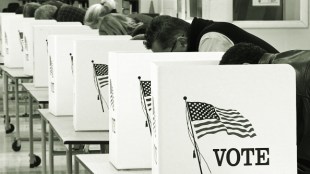
We’ll also acknowledge that a lot of people – including maybe you – are wondering about those election polls. Election polling didn’t have a good year in 2020. How bad was it? Why were there problems, and what can be done about them? What do election poll errors mean for the trustworthiness of all polls?
We’ll wrap up the course with a look at how you can become a good poll consumer. What can you do to make sure you’re getting reliable information? How do you know which polls to trust? And if you want to understand what the public thinks about a particular issue, what is the best way to use polls to inform yourself?
Why do we have opinion polls?
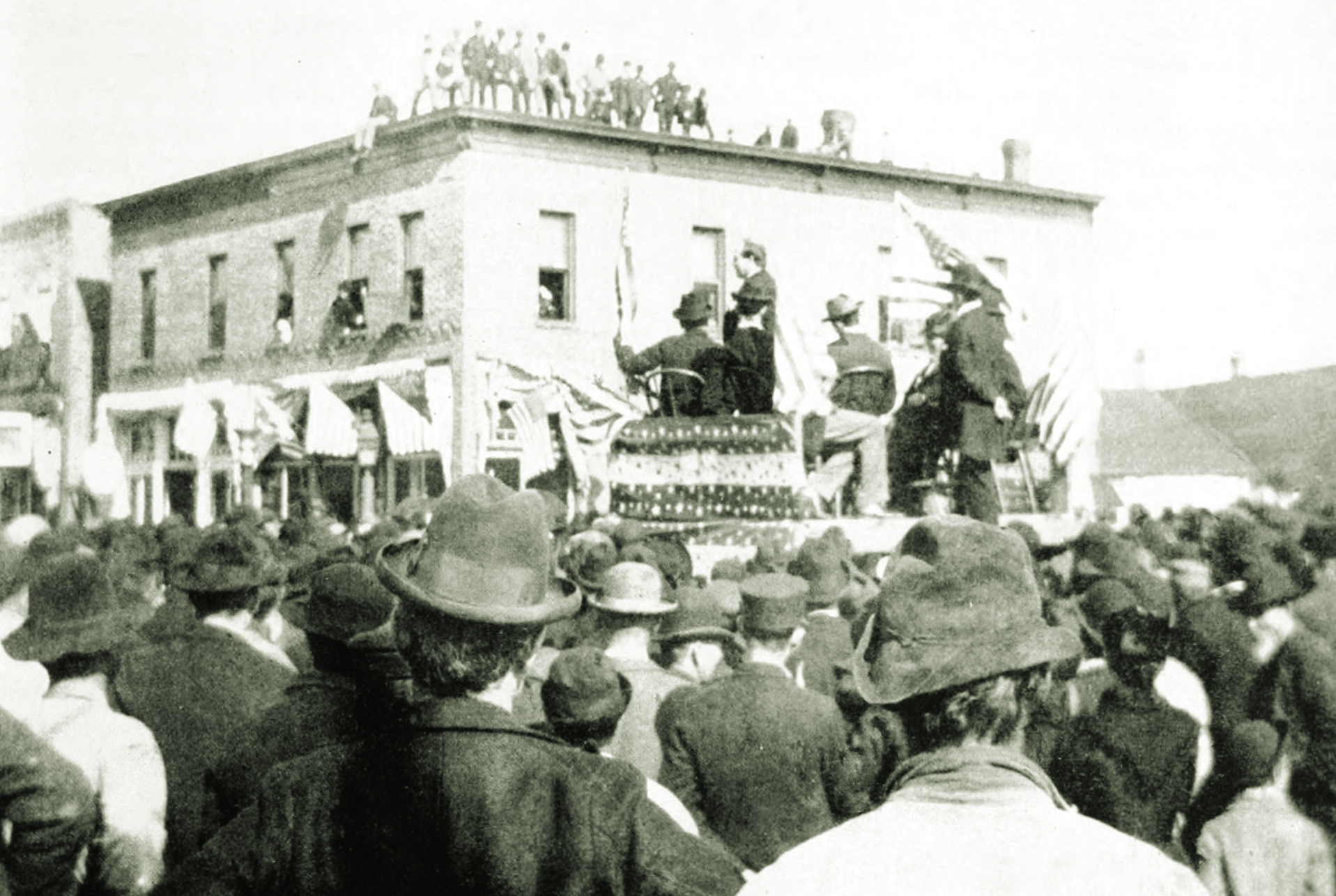
It turns out the word “poll” originally was a synonym for “head” – polls counted heads at meetings or rallies to gauge popular sentiment (as in the 1870s political rally in Nebraska shown above). Today, we use polls to count heads, too – just a little more systematically than the old methods. Here at Pew Research Center, polling is the primary way we find out what the public knows, thinks and wants.
Don’t elections tell us what the public wants?
You might be asking yourself this question or thinking about all the other ways citizens communicate their opinions to officials, including through letters, phone calls, emails, texts, campaign contributions and even protests. All of those are indeed important ways that public opinion gets communicated, but each of them is limited in important ways.
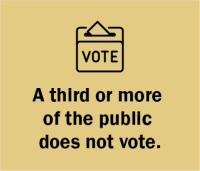
Elections are very blunt. They don’t tell us why people supported a particular candidate or whether the public agrees with every policy the candidate proposed. And even with a high turnout election like 2020, a third or more of the public typically does not vote. How are their opinions accounted for?
Citizen communications to politicians, as well as more demonstrative activities like protests, can provide clearer guidance about how some people feel on certain topics. But only a minority of the public takes part in such activities, and those who do are hardly representative of the broader population. They tend to be more highly educated and more affluent than the average adult. Voters and those who contact public officials also tend to be older than those who don’t.
And one more thing: A lot of polling is conducted about topics other than those directly addressed by government. Elections do not readily answer broader questions about how people see the world – whether they believe in God, trust scientists or worry about misinformation, for example.
How are opinion polls better?
Rigorous opinion polls can overcome many of these limitations. The basic goal of a good public opinion poll is to give everyone in the population, regardless of their wealth, age, education, race, knowledge of politics or experience with it, an equal voice about the issues of the day. We use a technique called “random sampling” to try to accomplish this. If it works properly, the sample we come up with for a survey can be assumed to be representative of the larger population on any question we might be interested in.
Random sampling matters because it makes sure that some voices aren’t louder than others. Here’s an example: Wealthier people are far more likely than others to donate to candidates running for office, and public officials hear these contributors loud and clear – even though they’re a small and unrepresentative slice of the entire population. But wealthy people are no more likely to be sampled for our polls than anyone else, so their voices don’t drown out the voices of others. (More on random sampling later in the course.)
What if we didn’t have polls?

Because polls can tell us things that are not available through any other method, they help serve as a check on those in power (and anyone else, for that matter) who might try to claim that they know what “the American people” think or want. Without polls, we’d be back to an era of relying on so-called “man on the street” interviews – basically, a reporter going out and interviewing anyone available nearby. Such exercises can be interesting or fun, but they aren’t a reliable way of finding out what a diverse population really thinks
Extra credit
Want to learn even more about the world of survey research? Take a look at some of the resources below from AAPOR, the leading association of public opinion and survey research professionals in the U.S.
What are the different kinds of polls?

The term “poll” is usually applied to a survey designed to measure people’s opinions. But not all surveys examine opinions. In fact, even our opinion polls often include questions about people’s experiences, habits or future intentions. Let’s look at the variety of ways polls and surveys are used.
The decennial census and other government surveys in the U.S.
If you’re like most Americans, at some point in 2020 you probably responded to a survey conducted by the U.S. Census Bureau, asking questions about the people living in your household. This is the decennial census, a survey mandated by the U.S. Constitution to count the nation’s entire population every 10 years. (They began releasing data from it in April 2021.)

While the mammoth effort to count the population may be its most visible and challenging activity, the Census Bureau also conducts numerous other large surveys for specific purposes. These include surveys to measure crime victimization, how Americans spend their time, the health of the U.S. population and even “Fishing, Hunting and Wildlife-Associated Recreation” (PDF). These government surveys typically get very high levels of cooperation from the public and are trusted by officials to provide important data to guide policymaking. At Pew Research Center, we also use them as benchmarks to help ensure the accuracy of our own polls.
Election polls
Undoubtedly, the most visible polls are election polls, also sometimes called “horse race polls.” Hundreds of them are conducted in a typical presidential election year, and they attract an enormous amount of attention. After all, people want to know what is going to happen. In 2016 and 2020, many election polls missed the mark, hurting polling’s reputation. We’ll circle back to the possible reasons for this in a later lesson.
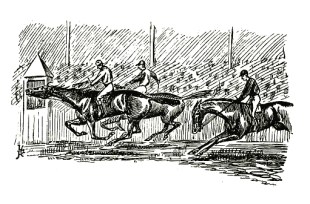
Contrary to popular assumption, predicting the outcome is not the most important reason election polls are conducted. Instead, Pew Research Center, news organizations and others conduct them to understand what voters are thinking and why they are planning to vote the way they are. Campaigns themselves use them to guide their strategic decisions, such as what messages to emphasize and where to allocate resources.
Still, polls tend to be judged by how accurate they are in foretelling the results, and that can be a very difficult task in a close election, when a relatively small error can cause a poll to miss the mark. Election polls don’t just have to gauge the level of support for each candidate; they also have to figure out who is going to vote, since many more people typically say they plan to vote than actually do. Other kinds of polls typically don’t have to predict who will cast a ballot.
Polls about issues
Issue polling – our bread and butter here at the Center – is focused on opinions and experiences: what people know about an issue, how it affects them, how important they think it is and what they think should be done about it. The coronavirus pandemic provides a prime example of how issue polling can inform a society’s response to events. The outbreak posed challenges to nearly every aspect of daily life in the U.S. and around the world, changing work, school and leisure patterns for tens of millions of people nearly overnight.

In early March 2020, Pew Research Center responded to the growing concerns among health experts and public officials by conducting the first of nearly two dozen surveys to gauge the public’s reaction to the pandemic. This first survey measured people’s perceptions of the threat posed by the outbreak, their level of confidence in the government and the health community to respond, and their judgments about how the news media was covering the pandemic. That first survey revealed the partisan divisions in public attitudes that have now become very familiar.
Subsequent surveys tracked the pandemic’s economic fallout and mental health consequences and explored the importance of the internet and the public’s willingness to take a vaccine. (Polling data on the share of the public that has been vaccinated almost exactly matches the actual share as documented by the CDC.) These surveys – along with similar efforts undertaken by major news organizations, academic researchers and others – provided policymakers, employers, religious leaders and the general public with a portrait of how the pandemic was affecting people and what they wanted government to do to deal with it.
Market research surveys

More common even than surveys measuring opinions on issues are surveys conducted by businesses to help them better understand consumer sentiment and preferences. While you may never have been included in an opinion poll about national policies or politics, you almost certainly have been asked by a retail store, automobile repair shop, hospital, restaurant or other kind of establishment to rate the quality of their products or services. A great deal of market-related survey research is done to help businesses predict demand for new and existing products or services. Among many other things, surveys like these are used to measure the size and characteristics of the audience for television and radio programming and to gauge how people are reacting to newly released movies.
Measuring public opinion without surveys
Of course, it’s also possible to get some sense of public sentiment without doing a survey. For more than a century, journalists and scholars have tried to make sense of election data by closely examining how voting patterns relate to the characteristics of the people living in particular locations, such as ethnic enclaves. And despite polling’s difficulty in getting people to share their opinions in interviews, tens of millions of Americans are willing to do so on social media sites like Facebook, Twitter, Instagram and others. Political scientists have begun extracting information about public attitudes (PDF) from these sources, too. Studies have also focused on deriving evidence of attitudes, such as racial animosity, from an analysis of Google searches. But as exciting as these new methods may be, a variety of challenges have hindered the development of such methods as a potential replacement for surveys.
Extra credit
Want to learn even more? Here’s a reading list:
- What to know about the 2020 census (Pew Research Center)
- How asking about your sleep, smoking or yoga habits can help pollsters verify their findings (Pew Research Center)
- Does public opinion polling about issues still work? (Pew Research Center)
- The Death Of Polling Is Greatly Exaggerated (FiveThirtyEight)
- Can Likely Voter Models Be Improved? (Pew Research Center)
- Polls on COVID-19 vaccination closely align with CDC data (Pew Research Center)
How does polling work?

The general goal of a poll is to describe or explain something about a population of interest (for example, the general public or registered voters) by asking questions of a small number of people who represent that larger population.
Conducting a poll requires three things: a set of questions to ask (a “questionnaire”), a set of people to interview (a “sample”), and some way of connecting the two (sometimes called the “mode of interview”). Once you have conducted the interviews, you have to tally up the data and summarize the results in a way that accurately reflects what your respondents told you.
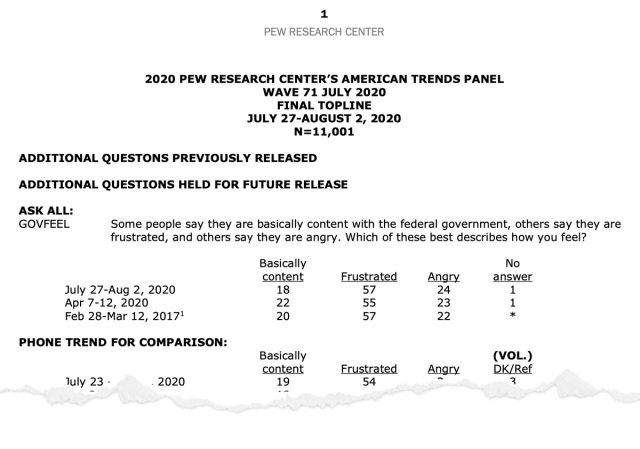
All of this is a bit of a simplification, of course, but doing the best possible job with these three things is the essence of conducting a good poll.
The questionnaire
The heart of a good poll is the set of questions to be asked. Seems simple, right? After all, we ask and answer questions all day long when talking with other people. But we also know that misunderstandings are common in human conversations. So it’s important that poll questions are relatively simple, clear and able to be understood in the same way by people from a wide variety of backgrounds. (Check out our five-minute Methods 101 video on writing good survey questions.)
It’s also important to ask questions that people can answer. While that may seem obvious, you might be surprised by how many polls ask people about topics they’ve never thought about or know little about. Polls also sometimes ask people to remember details about things they’ve done in the past that hardly anyone could be expected to recall accurately.
Another concern is that polling questions can intentionally or unintentionally lead people to answer in a particular way, just by the way they are posed. For example, asking people whether they agree or disagree with a statement usually gets more agreement than if the statement is paired with an alternative point of view. A 55% majority in 1994 agreed with the statement “The best way to ensure peace is through military strength.” But posed against the alternative of “Good diplomacy is the best way to ensure peace” just 36% in another poll conducted at the same time endorsed “peace through strength.”
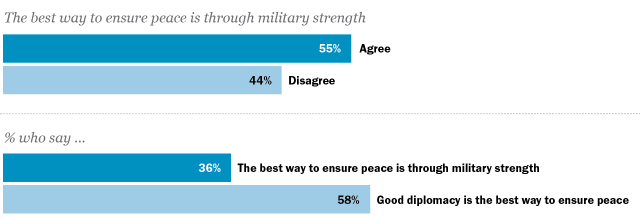
Don’t be too suspicious about this, though. Most public pollsters are trying to get a fair reading of people’s opinions. And as a consumer of polls, you can do a pretty good job of evaluating the fairness of questions by consulting the full text of the question wording (sometimes called a “topline”). Read the question aloud: If it sounds loaded to you, it probably is. And if the full text of the questionnaire isn’t made available, you should be skeptical about the poll. At Pew Research Center, we make all our questionnaires publicly available. Here’s an example. (PDF)
The sample
If you field a poll only among your family, friends and co-workers, you may get interesting results, but you would not be able to generalize the results to people you don’t know. For that reason, a good poll needs a sample that includes lots of different kinds of people.
The best way to get that diversity is through something called “random sampling,” a method that gives everybody in your population of interest an equal (or at least a known) chance of being included.
How does that work? Typical random sampling approaches include calling a random selection of telephone numbers (including cellphone numbers) or mailing a survey to a random sample of addresses. Random phone numbers can be generated from a known set of area codes, exchanges and local groups of numbers that have been assigned to people or to households, and the U.S. Postal Service maintains a list of all residential addresses in the U.S. These two approaches give nearly every American a chance to be polled.
Random sampling isn’t perfect, because not everyone who is sampled for the survey can be contacted, and most who are contacted don’t agree to be interviewed. Plus, there are some differences between those who are contacted and participate in a poll and those who don’t. But pollsters can correct for this problem using a technique called “weighting.”
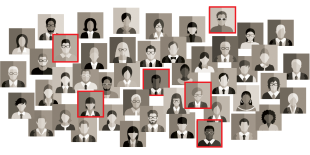
Weighting boosts the voices of people who belong to groups that are less likely to participate in polls and lowers the voices of people from groups that are more likely to take polls. For example, people who don’t have a college degree are a little less likely to participate in polls, so those without a degree who do participate are “weighted up” to match their rightful share of the population. On the other hand, people who engage in volunteer activities tend to be more likely to participate in polls than others, so their responses are “weighted down” – they count less in the final result.
Pollsters rely on knowledge about the population from the U.S. census or other sources to guide their decisions on weighting. It’s important to remember that the goal of weighting is to ensure the voices of different groups are accurately represented in a poll’s results – and that the overall result accurately represents the views of the U.S. population as a whole. If it sounds complicated, it is. It’s one of the more complex (and important) things pollsters do.
A lot of the polls we see these days don’t even use random sampling. Instead, they rely on various techniques to get people online to volunteer (or “opt in”) to take surveys, often in exchange for small rewards like gift cards. How’s it possible for these polls to accurately represent the population? One common way is through weighting – the same process used with random samples. But in the case of opt-in surveys, we don’t even have the benefit of knowing that all kinds of people and groups in the population had a chance to be included, so the burden on weighting to make the sample match the population is far greater. Unfortunately, some of these opt-in surveys use very rudimentary approaches to weighting, which are less effective in making them representative. In addition, these surveys are vulnerable to contamination from “bogus respondents” – people who are ineligible for the survey or who provide insincere responses.
The mode of interview
Most of the first polls back in the 1930s and ’40s involved interviewers knocking on doors and asking questions of the people who happened to be at home. This kind of personal interviewing was a common method until the 1980s, though it is very expensive and rarely used today in the U.S. (At least until the coronavirus pandemic, face-to-face interviewing was still common in many parts of the world.) Paper-and-pencil surveys, often delivered by mail, were popular and remain a staple of the polling world today. Telephone interviewing became widespread in the 1980s and constituted much of the polling done over the following decades. But the rise of the internet added a new way to interview people, and today the internet accounts for the majority of all polling. Typically, people are initially contacted by phone, mail or email and then invited to take a survey on the web.
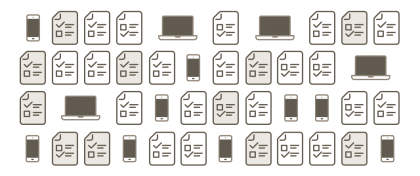
Each method or mode of interview has some strengths and weaknesses. Using a live interviewer can help persuade people to participate and keep the interview focused. But the presence of an interviewer – either in person or on the phone – can also affect how people respond. Self-administered surveys, like those done on paper or online, may yield more honest and accurate answers and allow people to respond whenever it’s convenient for them. Regardless of mode, the goal is always for respondents to have the same experience and answer freely and thoughtfully. One of the interesting trends in polling today is the rise of “multi-mode” surveys – polls that give those sampled the option of responding in more than one way.
Finally, we try to remain mindful that our respondents, collectively, give us hundreds of hours of their time when they read our survey questions and provide their answers. We are grateful and honored that people entrust their views to us, so it’s important to us that we get it right when we tell the world what those views are. That’s what good pollsters do.
Extra credit
Our Methods 101 video series explains the basic methods we use to conduct our survey research. Here’s a playlist of short videos for you to watch at your leisure.
- How can a survey of 1,000 people tell you what the whole U.S. thinks?
- How do you write survey questions that accurately measure public opinion?
- How does the way a poll is conducted influence the answers people give?
- What are nonprobability surveys?
- How is polling done around the world?
Is accurate polling becoming harder to do?

Polls received a lot of criticism after the 2020 U.S. general election. Polls said Joe Biden would win and he did, but not by as large a margin or in as many states as polls led people to expect.
The polling profession is making progress in understanding what went wrong in 2020. But the obstacles facing polling have been growing steadily over the past few decades, and election polls – one especially high-profile type of poll – face unique challenges, including having to predict who is actually going to vote. These obstacles have required pollsters of all kinds to adjust their methods and devote considerably more effort to obtain accurate results.
It’s getting harder to reach people and persuade them to participate in a poll
The biggest obstacle surveys face today is that it has gotten much harder to reach people and persuade them to consent to an interview. This is mostly a consequence of lifestyle changes – people seem to have busier lives – coupled with a growing wariness about cooperating with requests for information from a person or organization they are not familiar with. The nature of the problem is evident in the chart below, which shows Pew Research Center’s telephone survey response rates over the past couple of decades. (The response rate is an estimate of the share of households we try to reach that ultimately complete an interview.)
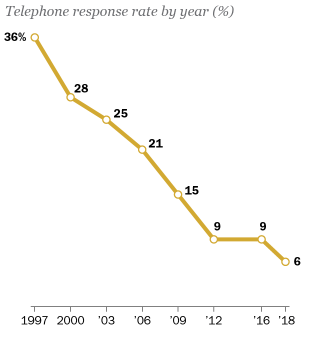
In part because of this decline in telephone response rates, Pew Research Center decided a few years back to stop relying primarily on telephone surveys and instead switch to using rigorous online surveys. While telephone surveys can still provide accurate data, online surveys provide some advantages that make them an attractive alternative. Research has shown, for example, that the quality of answers people give in self-administered surveys is often higher than in surveys with an interviewer. And not needing interviewers means online surveys are usually less expensive than telephone surveys, sometimes significantly so.
That said, online surveys aren’t immune to the same problems as other kinds of surveys. In the 2020 elections, no type of survey stood out as especially more accurate than the others, and all kinds of surveys had problems.
Some people are more likely than others to take polls
Another challenge for pollsters – especially election pollsters – is that people with higher levels of education tend to be more willing to participate in surveys, resulting in samples that overrepresent those with college degrees. The same is true for people with higher incomes. Perhaps not surprisingly, people who are engaged with politics and public affairs are also more willing to take polls that deal with these subjects.

Fortunately, data from the U.S. census can serve as a benchmark to ensure that survey samples match the total U.S. population on characteristics like education, age and voter registration. Using this information, we’re able to give greater weight to underrepresented groups in the sample so their voice matches their share in the population.
But other problems can’t be fixed by consulting census data. In 2020, for example, there was a general tendency for Biden supporters to be more likely than Trump supporters to cooperate with polling requests, according to a review of 2020 election polls by the American Association for Public Opinion Research (AAPOR), the major professional association of U.S. pollsters. If that turns out to be the reason for the polling misses, it’s a highly unusual situation. Election polling in the U.S. and around the world has been quite accurate for decades because supporters of different parties and candidates have seemed equally willing (or unwilling) to participate. Right now, we cannot know whether this is a short-term issue or something polls will have to deal with going forward.
For election surveys, who will actually vote?

Election polls also bear an extra burden that most other polls do not: They have to anticipate who, among all those interviewed, will actually vote. Even with a voter turnout in 2020 that eclipsed 100-year records, fully a third of the U.S. eligible adult population did not cast a ballot.
Not everyone who says in a poll that they intend to vote actually does so, and election polls have to estimate who will and who won’t. That may be a particularly difficult job in a high turnout election, when people who haven’t voted in the recent past suddenly show up, confounding pollster estimates.
So can we still trust polls?
It’s important to put the 2020 performance of the election polls into perspective. The errors were consequential, to be sure, and very sizable compared with most election polls. But they were not particularly large in absolute terms – just a few percentage points, on average, on each candidate’s support. Of course, in the context of a close election, such errors mean the difference between a good and a bad forecast.
It’s also crucial to understand that most polls are not about elections. Instead, they aim to capture people’s views on the key issues of the day, the realities of their lives, such as their employment, lifestyle activities or health care, where they get their information, and other subjects. This kind of polling is important because it provides an independent source of information about what Americans experience and what they believe – without which we’d be left with what pundits, parties and public officials claim the public is thinking.
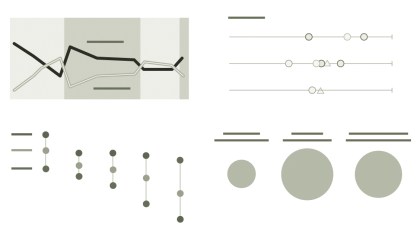
Fortunately, the news is better when it comes to this type of issue polling. We have a lot of evidence that polls that are weighted to match the population on important demographic categories do a good job. And even when it comes to issue polling, errors in accurately representing the share of Biden or Trump voters make very little difference in the results. For example, small errors in candidate support are less meaningful when trying to understand how people feel about abortion, the budget deficit, foreign aid, climate change or other issues. And just because someone supports a certain candidate does not mean they agree with their preferred candidate on every issue.
In sum, pollsters recognize the challenges they are facing and are working hard to ensure that their work continues to accurately represent the views of the public. One way this is happening is through a proliferation of different ways of doing polls, some of which may be less reliable than others. Experimentation is a good thing, but it makes the job of a poll consumer – you – much harder.
Extra credit
Want to learn even more? Here’s a reading list:
- What 2020’s Election Poll Errors Tell Us About the Accuracy of Issue Polling (Pew Research Center)
- Election polling errors across time and space (Nature)
- Q&A: Why and how we expanded our American Trends Panel to play a bigger role in our U.S. surveys (Pew Research Center)
- 2020 Pre-Election Polling: An Evaluation of the 2020 General Election Polls (AAPOR)
- Q&A: A conversation about U.S. election polling problems in 2020 (Pew Research Center)
What should you look for in a poll?

If it’s true that “you are what you eat,” then it’s also true that what you know about public opinion depends on your diet of polls. When nutritionists tell you to “eat right,” they usually mean that you should eat high-quality foods and have a balanced diet. Same with polls: Try to consume high-quality polling and limit your intake of junk polls. And if you want to better understand a topic, look at a variety of survey questions about it.
How do I know what’s high-quality polling?
The easiest way is to rely on polling from organizations with a track record in survey research, like Pew Research Center or Gallup (you knew I’d say that, didn’t you?). Major media organizations like Fox News, CNN, NBC, CBS, ABC and The Washington Post also have dedicated teams that conduct regular, high-quality polling on the issues of the day, as well as about elections. Many private survey companies and university research centers do polling of their own, sometimes in partnership with news organizations (NORC and The Associated Press, for example, or Siena College and The New York Times). Other universities that conduct polls include Monmouth, Quinnipiac and Marist. Of course, just because you may not have heard of a particular polling organization doesn’t necessarily mean its results are wrong.

Critics of polling sometimes say that polls are designed to promote a particular point of view. While it’s always possible to find a poll or individual question that might be biased, there are at least two reasons to be skeptical about broad claims about bias.
First, all the organizations mentioned above – and others – have been around and doing polling for many years. They have reputations to protect, both among their audiences and among their peers in the polling community. (And believe me, we carefully watch what our peers do – and vice versa.) If a particular poll publishes a questionable result, a competitor will sometimes conduct a similar poll to see if it can confirm the finding or perhaps raise questions about the original survey.
Second, you can usually make a reasonable assessment of the trustworthiness of a poll yourself. A reputable polling organization will make available some basic information about how the poll was conducted, how the questions were asked and what questions were asked. If the organization won’t provide that information, you shouldn’t trust its polls. (The major professional association of polling organizations, the American Association for Public Opinion Research, or AAPOR, has a list of polling organizations that have committed to transparency.)
OK, I’ve found some info about how a poll was done. But what exactly am I looking for?

There should be a methodology statement and a list of the questions asked, which, along with the description of the findings, should enable you to answer questions like these:
- Who conducted the poll, and who sponsored it? Sponsorship can provide some clues about possible bias or agenda.
- Who was interviewed? Was it all adults in the population, just the people in one state, only registered voters, or some special subgroup in the population such as teachers or people who home-school their children?
- How was the poll conducted? Was it by telephone, mail, online, in person? No method is perfect, but this information should always be disclosed.
- How were people selected for the poll? Were they selected randomly, or were they allowed to “opt in” to be a part of it? This can sometimes be difficult to determine, but random samples (also called “probability samples”) usually are better samples.
- When was the poll done? Public opinion on most issues is remarkably stable, so you don’t necessarily need a recent poll about an issue to get a sense of what people think about it. But outside events can and do change public opinion, especially when people are first learning about a new topic. It’s also true that polls taken immediately after a dramatic event may overstate the event’s impact on public opinion.
- How many people were interviewed? A poll with more interviews is usually better, but there’s no hard-and-fast rule. A national poll with only 500 respondents, for example, can measure views nationally, but it will generally not be able to break out the views of smaller groups in the population, like Black or Hispanic adults. And if the poll uses inexpensive opt-in participants to pad its sample size, there may be no additional value added.
- Was the poll weighted? If so, how? This is one of the more technical topics in polling, but a good poll almost certainly has been weighted – that is, statistically adjusted to correct for the inevitable difficulties in reaching a representative sample, as mentioned in Lesson 3. Polls should state whether or not they are weighted, and good polls should provide details about the weighting. The absence of this information is a red flag.
- Do the poll’s questions look like they are neutral and fair? You may not be an expert on polling or the subject of the poll, but you can read a question and make a judgment as to whether the pollster is trying to get a particular answer (again, see Lesson 3). Be sure to look at all of the questions in the poll, too: Sometimes a question asked earlier in a poll can affect the way later questions are answered. This short video provides more detail about best practices in writing survey questions.
If you are looking at election polls specifically, all of the above matter, and there are a few additional things to be aware of.
Why should I turn to polls to understand public opinion?
There is no shortage of public officials, lawmakers, candidates and others purporting to know what the public wants and believes. Without polls, it would be much harder to verify such claims. Of course, polls aren’t the only way to learn about public opinion, but they are the most comprehensive and least biased way.
Calls and letters to lawmakers certainly provide a view of public opinion, but they’re limited to those who feel strongly about an issue and have the time, energy and skills to craft and send a message. Talking to your friends may give you a sense of how they feel about a subject, but your friends are what we call a “self-selected sample” and can’t represent the range of experiences and opinions found among the larger population of your country, state or even local community.
By contrast, polls work the way democracy is supposed to work: They give everyone an equal chance to be heard. Good opinion polls represent the full range of views in a population.

If you are trying to learn what the public thinks about a subject, it’s important to remember that no single survey question can provide a perfect view of public opinion on an issue. Most issues are complicated and multifaceted. Moreover, the specific words used in a question may evoke different responses than alternative words that seem similar to the researcher (e.g., “climate change” vs. “global warming”). For this reason, we highly recommend that you look at a variety of measures of opinion on a topic, including:
- How important is the issue to people, especially in relation to other issues?
- How much do people know about the issue?
- How has opinion on the issue changed over time?
- How are different groups experiencing and thinking about an issue?
- Can data from sources other than surveys help us understand what surveys tell us?
Pew Research Center tries to provide that kind of variety in many of our reports (our 2017 report on Americans’ views of guns is a particularly good example). But you can also look for questions about a topic from many different polling organizations. We’d particularly recommend polls by Gallup, The Associated Press-NORC Center for Public Affairs Research and the Kaiser Family Foundation (for health-related public opinion). You can search a database of our survey questions here.
A few last thoughts
Pew Research Center has an entire team devoted to studying how polling works and how to make it better. As I mentioned at the beginning of this course, I’m a member of that team. We provide advice and guidance to the research teams at the Center and also write a lot about the work we are doing to continuously improve our polling. To keep up with our work, follow us on Twitter or sign up for our quarterly newsletter.
We hope you’ve found this course helpful and easy to understand. We’d love your feedback! We’re also interested in your suggestions for which topics to tackle next. Send us a note at minicourses@pewresearch.org.
Test your knowledge.
Want to see just how much you learned about polling? Take our 10-question quiz.
Invite a friend.
If you enjoyed the course, we’d be honored if you would recommend it to your friends. Want to take another? Try our email courses on immigration, the U.S. census or Muslims & Islam. And sign up for our other email newsletters to keep up with our latest research and analysis.
Extra credit
Interested in reading even more about polls? Here are a few more resources you might find useful:
- Guide to surveys and polling (American Association for the Advancement of Science)
- A “cheat sheet” to understanding polls (American Association for Public Opinion Research) (PDF)
- 5 tips for writing about polls (Pew Research Center’s Decoded blog)
- Key things to know about election polling in the United States (Pew Research Center)
- A basic question when reading a poll: Does it include or exclude nonvoters? (Pew Research Center)
Thanks for reading,

Scott Keeter
Senior Survey Advisor
Pew Research Center


